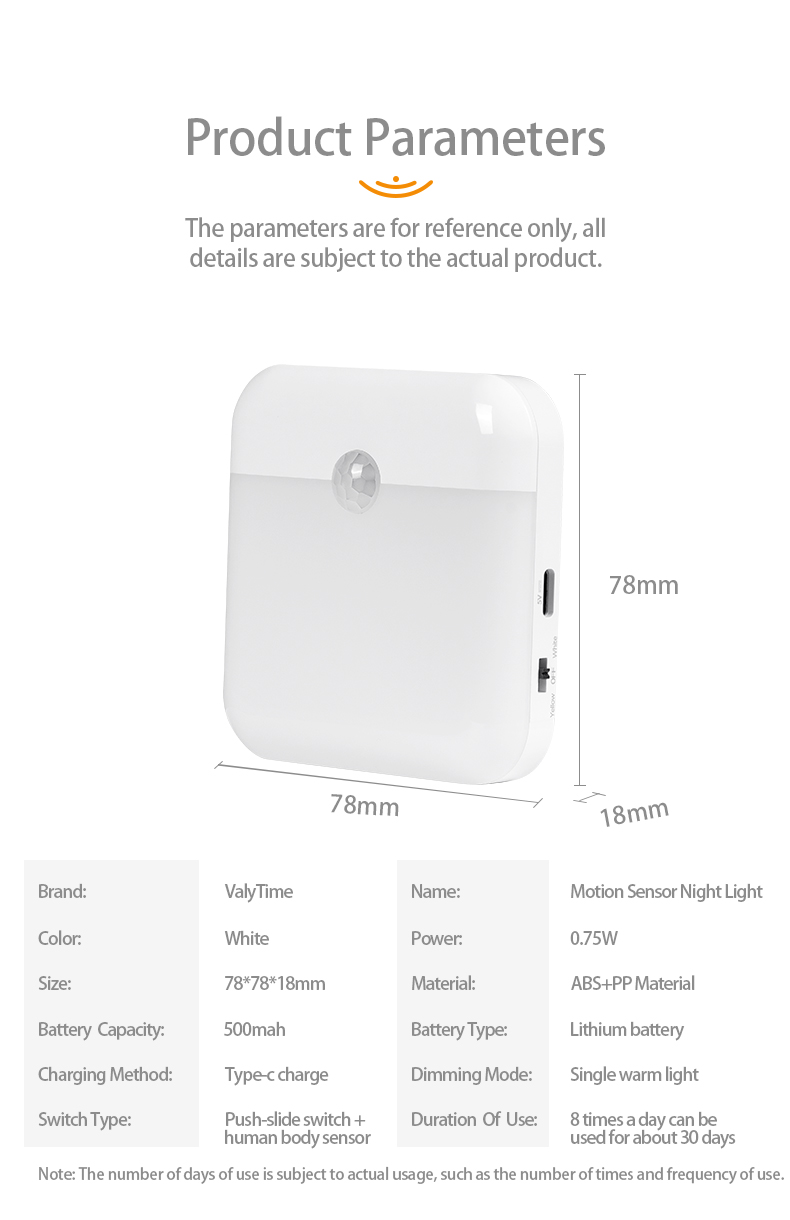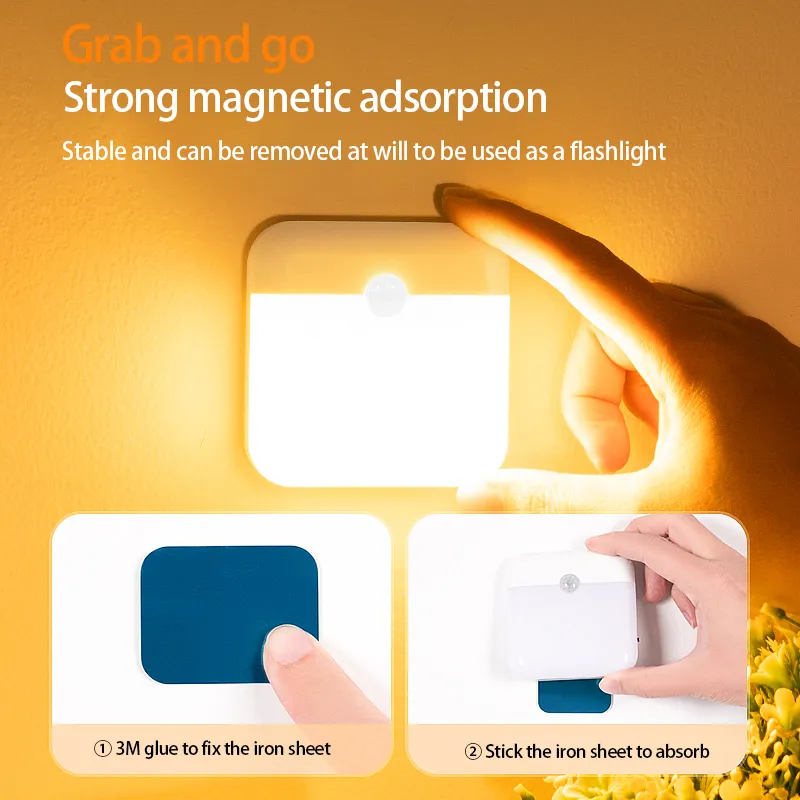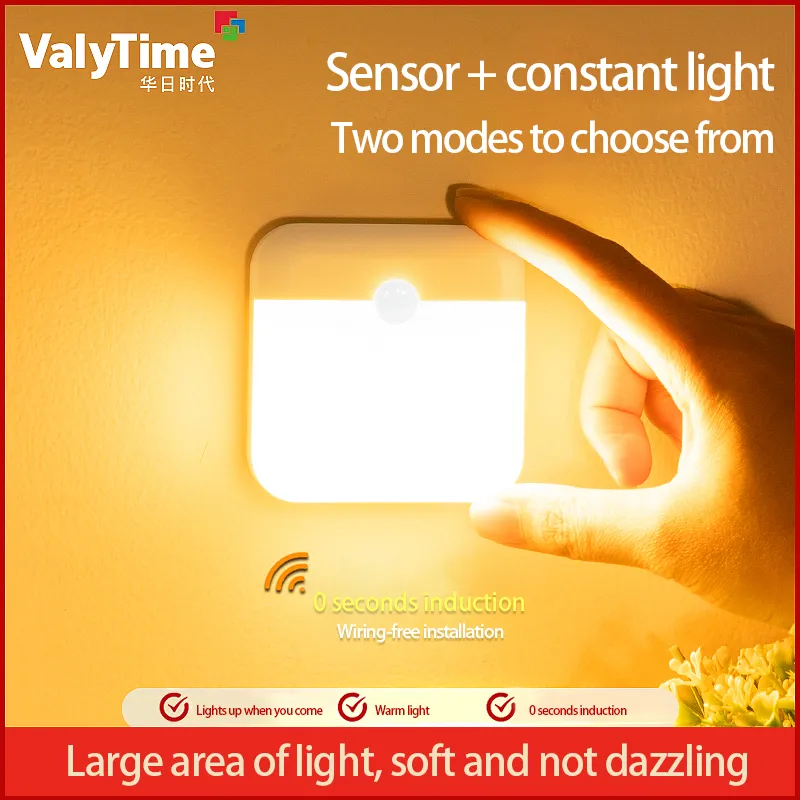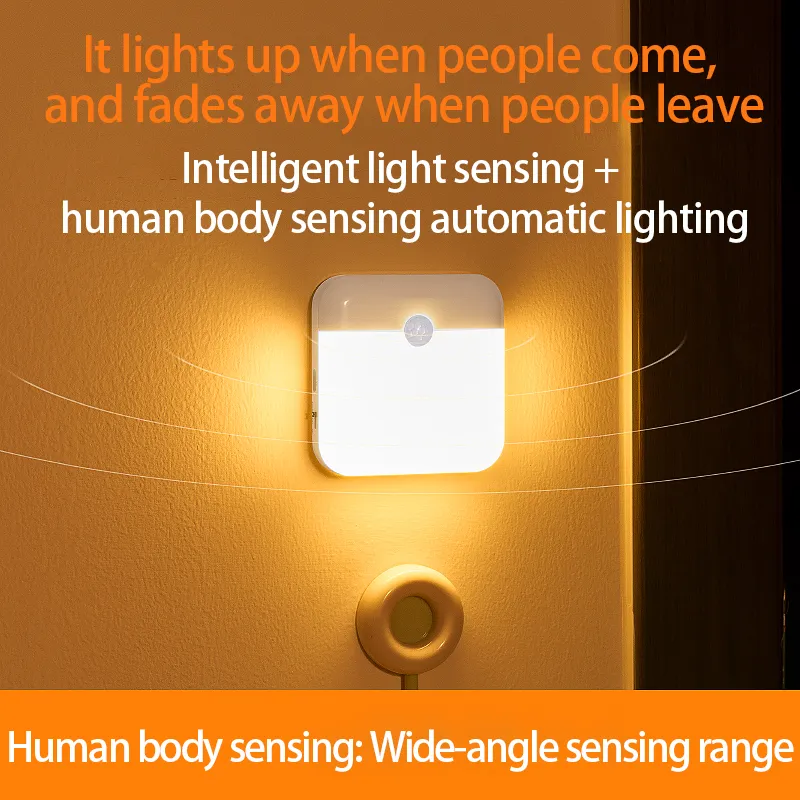Can I place LED night lights with sensors around my bed?
LED night lights with sensors have become an important tool for nighttime lighting due to their low energy consumption, long life, and warm light. LED night lights with sensors have become part of smart homes due to their automatic sensing and convenience. Placing LED night lights with sensors around the bed seems to be an ideal solution that can bring convenience to nighttime life.
However, many people still have questions about whether it is appropriate to place LED night lights with sensors around the bed, whether it will affect sleep quality, and how to place them correctly. This article will discuss this issue in detail to help users understand the feasibility, potential problems, and best practices of placing nightlights with sensors around the bed.

How LED night lights work
To deeply understand whether it is appropriate to place LED night lights with sensors around the bed, we first need to understand how LED night lights, especially LED night lights with sensors, work. Modern LED night lights generally contain two core parts: LED light sources and sensors. Common types of sensors are infrared sensors and microwave sensors, which mainly detect changes in the surrounding environment to decide whether to turn on the light.
1.1 Infrared Sensor
Infrared sensors sense infrared radiation emitted by objects (especially human bodies) to determine whether lights need to be turned on. Human body temperature is usually higher than the ambient temperature, and infrared sensors can identify motion by detecting changes in heat sources. When a person or other heat source passes through the sensor's detection area, the light will automatically turn on.
This sensor is suitable for scenarios where a large range of motion needs to be sensed, such as corridors, living rooms and other areas. However, since infrared sensors only sense changes in heat sources, if there is a temperature change nearby during sleep, the sensor may misjudge and cause the light to be turned on unnecessarily.
1.2 Microwave Sensor
Microwave sensors detect the movement of objects by emitting microwave signals and receiving signal reflections. Microwave sensors are usually more sensitive than infrared sensors and can detect longer distances and more subtle movements. This sensor is suitable for environments with large spaces and frequent movements.
However, due to its high sensitivity, placing LED night lights with microwave sensors around the bed may cause false triggering, especially when sleeping, when slight body movements or other environmental changes may also trigger the light to turn on.
1.3 Application of sensors
No matter what type of sensor, LED night light bulbs can automatically adjust their state according to changes in the environment, avoiding the trouble of users turning on and off the lights manually. However, the sensitivity and installation location of these sensors have an important impact on the working state of the lights, especially in the sleeping environment. Overly sensitive sensors may affect the quality of sleep, but instead make the lights turn on frequently at night and disturb sleep.

What are the Pros and Cons of placing LED night lights with sensors around the bed?
2.1 Advantages: Convenience and safety at night
Placing LED night lights with sensors around the bed can significantly improve the convenience and safety of night life. For people who often get up at night or have difficulty in moving, LED night lights with sensors provide touch-free automatic lighting, without the need to fumble for switches, and conveniently return to bed or perform other activities quickly.
● Nighttime lighting: For many people, getting up at night is a common phenomenon. Especially among older people, the frequency of getting up at night may be higher. At this time, if there is a nightlight with sensor around the bed, when they stand up from the bed, the light will automatically light up, reducing the risk of falling when walking.
● Children's lighting: Nightlight with sensor is also very practical for families with children. When waking up at night, children do not need to fumble for the switch to find the light source, which is safer and more convenient for them.
● Improve comfort: Some people may need to do some simple operations at night, such as reading or looking for items. The LED night light lamp placed around the bed can provide enough light to reduce the stimulation of strong light to the eyes, while providing a comfortable lighting environment.
2.2 Disadvantages: False triggering, disturbing sleep
Although LED night lights with sensor have obvious advantages in convenience and safety, if they are not placed properly, they may cause some inconvenience, especially the impact on sleep quality.
● False triggering problem: Due to the high sensitivity of the sensor, microwave sensors and infrared sensors may mistakenly detect slight body movements or other heat sources when the user is sleeping, causing the light to turn on unnecessarily. This false triggering situation not only wastes electricity, but also may affect the user's sleep, especially for people who are sensitive to light, sudden light may disrupt their deep sleep cycle.
● Frequent on-off problem: Installing multiple nightlights with sensors around the bed may cause the lights to turn on frequently, which not only wastes electricity, but may also cause excessive brightness in the environment and affect sleep quality. Especially when the brightness of these lights is strong, even soft LED lights may appear too glaring in a dark environment.
● Light pollution problem: Even if the light itself is relatively soft, the presence of the light source may still cause local light pollution, affecting the depth and quality of sleep. For some people who are particularly sensitive to light, especially infants or people with sleep disorders, the slight interference of light may prevent them from entering a deep sleep.

How to properly place LED night lights with sensors?
To avoid false triggering and disturbing sleep when placing LED night lights with sensors around the bed, users can adjust the installation location and usage according to the following suggestions.
3.1 Choose the right sensor type
It is important to choose the sensor type that suits the sleeping environment. If you want to reduce false triggering, you can choose an infrared sensor. Compared with microwave sensors, infrared sensors have a smaller detection range and can capture motion more accurately, but they are less sensitive and are suitable for more static environments. However, infrared sensors are sensitive to temperature changes, and if there is an air conditioner or other heat source near the bed, its stability may be affected.
If there is a large activity space in the home (such as a living room, corridor, etc.), although microwave sensors are more sensitive, they should be installed to avoid places that are prone to false triggering, such as beds.
3.2 Reasonably adjust the sensitivity and delay settings of lamps
Most nightlights with sensors provide a sensitivity adjustment function, and users can adjust the sensitivity of the sensor according to their needs. In addition, many modern LED night light lamps also support delay settings, that is, the light will be delayed for a certain period of time before it goes out when the sensor no longer detects movement. Adjusting the sensitivity and delay function can avoid turning on the light too early or too late, minimizing the interference with sleep.
3.3 Reasonably arrange the position of lamps
When placing LED night lights with sensors around the bed, avoid installing the lamps directly near the head of the bed. Positioning too close to the bed may make the sensor more likely to sense slight movements of the human body, resulting in false triggering. It is best to place the lamp at a certain distance from the bed, which can ensure that it provides lighting when getting up at night and avoid interference with sleep.
In addition, you can consider installing the lamp on the wall next to the bedside, or distributing multiple lamps in different corners to ensure that the light covers the entire room, but not too concentrated to avoid direct light source exposure to the sleeper's eyes.
3.4 Choose the right brightness and color temperature
The brightness and color temperature of the LED night light lamp are another important factor affecting sleep quality. Choosing a LED night light lamp with a soft, warm color temperature (such as 3000K or lower color temperature) can create a warm and comfortable sleeping environment. Avoid choosing lamps with too high brightness, which can reduce the disturbance to sleep.

Huari Lighting Co., Ltd., a trusted LED lighting manufacturer in China, has been in the industry since 1996. Our advanced facility covers 92,000 square meters and produces over 1 million lighting products monthly, ensuring reliable supply for international buyers. We specialize in LED downlights, ceiling lights, panel lights, and wall lights, as well as energy-efficient LED bulbs like GU10 and MR16. Certified by CE, RoHS, and ERP, our products meet global standards while competitive offering prices. Whether you need customized wholesale orders, designs, or promotional deals, Huari delivers premium lighting solutions at affordable rates. Partner with us for unbeatable service and high-quality products.
